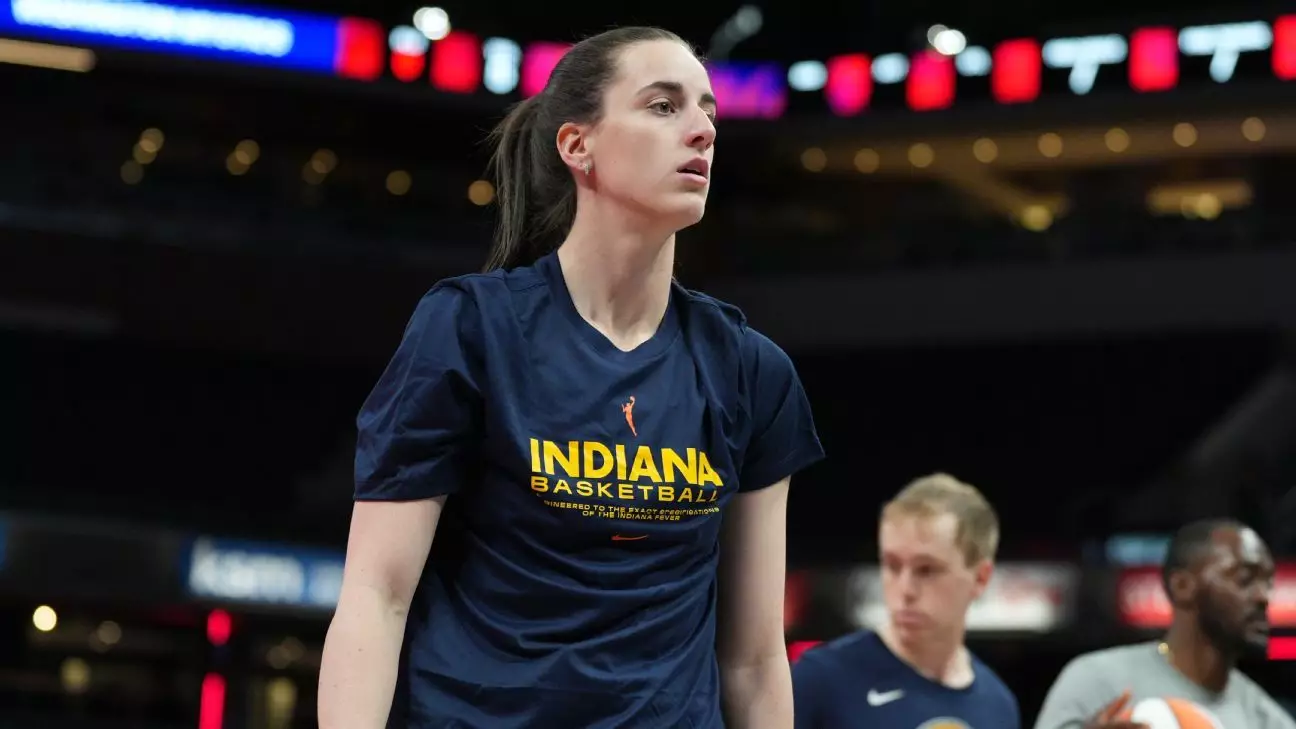For fans of women’s basketball, Caitlin Clark represents not just exceptional talent but an almost magnetic charisma that draws audiences in, making her absence from the court feel particularly poignant. As Clark recovers from a left quad strain that has kept her out of action for the past three games, one can’t help but reflect on what it means for both her and the Indiana Fever. Injuries in sports are a routine setback; however, the psychological toll of being sidelined can be just as devastating as the physical pain endured on the field. As the 2024 No. 1 pick, Clark’s journey through this adversity provides an interesting lens through which we can examine the interplay between personal growth and athleticism in professional sports.
Her decision to take a cautious approach to her return—asserting that it’s not worth rushing back for the weekend game against the Chicago Sky—signals a level of maturity that is refreshing in a culture often obsessed with instant results. Many athletes, fueled by the adrenaline of competition, tend to overlook the necessity of proper healing. Clark’s emphasis on ‘day-by-day’ assessment reflects an understanding of the complex nature of injuries, particularly this being the first instance in her collegiate and professional career where she has had to miss games. It speaks volumes about her professional growth and illustrates a broader trend wherein athletes are increasingly recognizing the importance of long-term well-being over immediate performance.
The Psychological Burden of Injury
Clark’s sentiments reveal the often-hidden struggles athletes face when they are forced to step back. The challenge of dealing with inactivity can be more daunting than one might imagine. “Not being able to practice… has often been the hardest part,” she admits. This statement cuts deep into the psyche of an athlete whose identity is intrinsically tied to their performance. Injuries strip them of not only their capacity to play but also some core elements of their routine, leaving them with a quandary of self-identity. Clark’s acknowledgment that she has always struggled with patience adds layers to her narrative, as impatience breeds frustration—emotions which can further hinder recovery.
The mental fatigue that arises from chronic injury is often overlooked in discussions surrounding sports. That Clark is experiencing personal growth through this adversity—an important lesson in patience and the value of observation—provides a glimmer of insight into how one can adapt in the face of hardship. Coach Stephanie White’s perspective that Clark should use her time on the sidelines as a chance to learn enhances this view. Observational learning can often yield insights impossible to achieve while actively participating.
Building Team Chemistry from the Bench
Interestingly, Clark’s role as a “connector” between her teammates and coaching staff while sidelined underscores the importance of community in professional sports. The fabric of a team is stitched together not just through the victories on the court but through the support and camaraderie that flourishes off it. Clark’s willingness to maintain her voice within the team dynamic, even from the sidelines, mirrors a key concept in liberal philosophy—the idea that collaboration breeds strength.
Her comments about the team’s resilience in her absence shed light on how injuries can disrupt team chemistry and strategy but can also reveal hidden layers of collective spirit. The Fever’s struggle to adapt post-Clark’s injury is a narrative familiar to many teams. As players shuffle into temporary roles, they often surprise themselves and their fans alike with their capability to innovate and adapt. Clark’s perspective illustrates that while she is an essential player, the team’s ability to flow and adapt is equally crucial. This reinforces the belief that in a liberal framework, each individual’s role contributes to the greater whole, whether they are in active participation or supportive observation.
The Path Forward: More Than Just Games
As Clark prepares for reevaluation, it is this broader narrative surrounding her recovery that takes center stage. Basketball is undoubtedly a game of skill and competition, but it is also a forum for personal resilience and evolution. In a world that often emphasizes win-at-all-cost mentalities, her approach serves as a refreshing reminder that sometimes, the most critical successes occur off the court, in moments of reflection, learning, and growth.
The real journey for Clark may not just be returning to peak performance but understanding how to balance competitive ambition with self-care. Her ability to navigate this intricate terrain could have implications not just for her career, but also for how younger players view the challenges of professional sports. As fans, we await her return to the court, hopeful not just for her success but for the evolution of a true athlete navigating the complexities of life and sport.


Leave a Reply